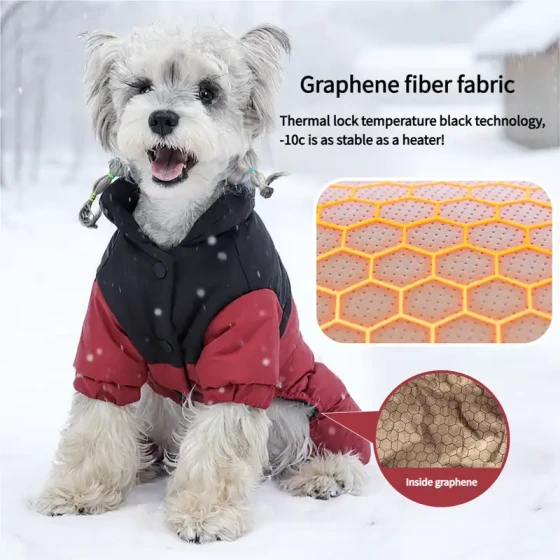Choosing Appropriate Nutrition for Pets

Pet Dogs
A dog has only one nutritional standard;
A dog has only one nutritional standard at any physiological stage;
A dog in puppyhood, adulthood, or old age has completely different nutritional standards;
Dear pet lovers, can you agree with this viewpoint? Indeed, it is so. We now understand that different types of dogs require different nutritional standards, for example: small breeds, medium breeds, or large breeds; even different breeds only have one nutritional standard, such as Labrador Retrievers, Golden Retrievers, Chihuahuas, Shetland Sheepdogs, etc.; simultaneously, the same dog requires completely different nutrition during different physiological stages. For example, puppies need more nutrition for growth and development, while adults need to maintain normal nutrition plus attention to weight control. Therefore, a dog has only one nutritional standard, only one nutritional standard at any physiological stage, and the nutritional standards of different breeds, types, and ages must be completely distinguished. Only in this way can you provide your beloved dog with healthy and precise nutrition.
Choosing the Right Food for Your Puppy
First of all, congratulations on becoming a puppy owner.
This period will be a very special stage for both you and your puppy. Give your puppy a good start in life. Just as babies and adults have different nutritional needs, puppies and adult dogs also have different nutritional requirements. Your best choice is to provide your puppy with a good beginning in life to ensure she can accompany you healthily and happily for a long time.
The basic nutritional requirements for all puppies are: precise nutrition, plenty of playtime, and unlimited love. However, some puppies also have special needs. "Health starts from puppyhood" is our preferred nutrition philosophy. At the same time, different puppies’ breed, age, physiological stage, living environment, exercise, and genetics should have dedicated nutritional standards. The idea that "one fixed nutritional plan fits all puppies" is incorrect. Improper feeding habits and nutritional standards can cause health risks to your puppy, such as obesity risk, rapid growth risk, bone development risk, uneven bone and muscle development risk, and low immunity risk.
For growing puppies, only by meeting precise essential nutritional elements can their health be guaranteed. To meet the growth and development demands of pups, their bodies need increased amounts of energy, protein, and calcium. Precise nutrition is the key; any puppy’s health depends on ensuring your puppy’s initial nutrition precisely meets her lifelong nutritional needs.
Precise Nutrition for Weaning Puppies
Weaning puppies specifically refers to ages 42 days to 5 months. Pets in this stage face high morbidity, high mortality, and vigorous growth. Weaning is a major physiological shock stage in the pet’s entire life and is the biggest turning point in their life.
Puppies transition from complete dependence on the mother to full independence. At this time, the growth of various body tissues and organ functions require a large intake of high-quality protein, sufficient vitamins, and minerals and trace elements essential for growth during weaning. Experimental data show pets initially receive 77% of immunity from mother’s milk, but as growth progresses, maternal antibody levels gradually decrease—45% at 1 week, 27% at 2 weeks, 16% at 3 weeks, and by 8 weeks maternal antibody immunity is virtually zero. This indicates that during the weaning period, immune substances from the mother rapidly drop to almost zero, while the immune organs of pets are not yet fully developed, making them very susceptible to infectious diseases. Therefore, the nutritional requirements for food at this stage particularly emphasize choosing nutrients that aid immunity enhancement as a priority and ensuring nutrient abundance. At the same time, puppies’ digestive organs and functions are still immature with small organ size and volume and limited digestive enzyme activity and quantity, so food should be easy to digest and relatively nutrient-dense, including easily digestible rice, dairy products, meats, eggs, fruits, and vegetables.
During the entire 42-day to 5-month weaning period, growth ability across the body is uneven. Generally, before 3 months of age, weight mainly increases, and before 5 months, body length increases. Therefore, when designing pet food formulas for this stage, the physiological growth characteristics must be fully considered to provide appropriate nutrition accordingly.
The weaning stage is a special physiological period transitioning from complete dependence to independent living. It is a very special and important physiological stage and a crucial process for healthy growth and even survival. Providing precise nutrition in pet food at this stage is vital. It not only requires sufficient protein nutrition but also particular attention to the protein nutritional structure in the food.
At the same time, this stage is a vigorous period of initial body growth, with high demands for bone growth, bone health, and body development. This requires sufficient calcium supplementation and careful attention to the calcium-to-phosphorus ratio. An imbalance in calcium and phosphorus often causes bone development disorders or even fractures at this stage.
Choosing the Right Food for Your Adult Dog
With the increasing number of pet lovers and rapid improvements in pet medical and feeding technologies, dogs around us are living longer. More and more pet dogs are entering adulthood. According to investigations, the average age of pet dogs in China has increased from 1 year five years ago to over 3 years today. Adult dogs have completely become important family members. Therefore, actively caring for and loving them, providing appropriate exercise and precise nutrition are the only ways to ensure their long-term health and happiness. Only by providing adults dogs with precise nutritional standards can they happily accompany you for a long time.
Adult dogs require nutritional standards focusing on the optimal balance of nutrition and energy, reasonable ratios of minerals and vitamins, appropriate fat supply, and daily necessary exercise. Nutritional standards specially designed for adult dogs also include maintaining healthy teeth, skin, fur, and preventing gastrointestinal diseases.
Due to environmental limitations, more adult dogs tend to stay indoors without ample time and space for full exercise, becoming "couch dogs" with insufficient activity. Food nutrition for less active adult dogs needs differentiated treatment. Otherwise, obesity is very likely. Adult dogs with normal and low levels of activity must have clearly differentiated fat content in their pet food nutritional standards. Obesity is dangerous to every adult dog. Reasonable evaluation of activity level and physical condition should be conducted, with fat intake specially designed. Obesity must never be taken lightly as it causes various health risks. To effectively prevent obesity at the adult stage, a reasonable fiber content food formula can be provided to ensure low fat and calorie content while maintaining feeding quantity and satiety, avoiding prolonged hunger in pets. Salt content should also be reduced accordingly. In this regard, even if no obvious obesity is observed from your dog's body shape, controlling the ideal adult weight and regularly checking the adult dog’s weight is important.
Choosing the Right Food for Your Senior Dog
For pet lovers, it is important to note that dogs’ health level and daily activity decrease with age. As pet dogs age and enter the senior stage—currently considered 7 to 8 years and older—the feeding approach should change. Special nutritional standards appropriate for senior dogs should be provided to keep their golden years healthy, happy, and allow them to peacefully complete their life journey. Senior dogs have special digestive characteristics. Their food nutrition requirements include low fat (to prevent obesity), phosphorus, protein, and calories, combined with an appropriate amount of crude fiber in balanced senior dog food. Senior dogs face high risks of kidney and heart diseases, so their food must also include special ingredients for prevention and treatment of these conditions.
When pets enter the senior stage, calcium loss is severe, joints stiffen and age, and bone density decreases. It is very necessary to supplement sufficient calcium in the diet. Meanwhile, seniors’ activity levels drop sharply, and appetite reduces accordingly. Gastrointestinal diseases and constipation become frequent. Therefore, senior dog food must include ingredients such as oligosaccharides or crude fiber to ease and prevent gastrointestinal discomfort.
Choosing the Right Food for Your Working Dog
In reality, many pet lovers also choose to raise working dogs, hunting dogs, or sport dogs. These dogs have higher nutritional standards than small household pets, requiring higher protein and energy, strictly balanced nutrition, and maintenance of skin health. Therefore, we must provide working dogs with sufficient nutritional energy to meet their larger daily workload and exercise needs.
Precise nutritional balance creates a healthy and happy life for pets
Though a pet’s life is not very long, providing precise and good nutrition during each physiological stage is the most important. Nowadays, various commercial pet foods are developed under the guidance of professional pet nutritionists, tailored specifically for each growth stage to offer balanced diets. Ensuring a healthy diet and specialized nutritional standards for different breeds and age stages is the premise for a healthy pet life.
With the development and progress of pet food nutrition science, most veterinarians and animal nutritionists agree that leftovers are not pet food; "table food" generally causes nutritional imbalance. Diets often increase protein, fat, and calories detrimental to pets’ health, frequently harming pet health.
Be cautious when choosing food for your pet. Use precise nutritional standards during every growth stage and provide adequate water. This will not only bring health to your pet but healthy pets will also bring happiness and long-term companionship to your life.



